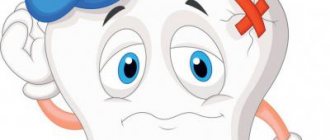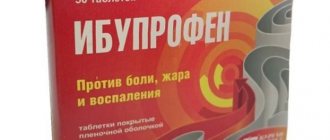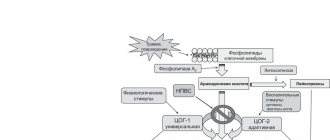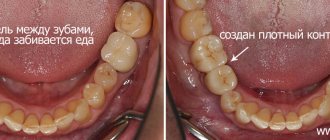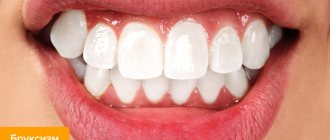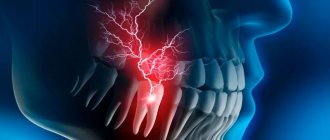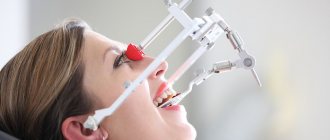Effect of the drug
Paracetamol has been considered a popular and sought after pain reliever and antipyretic for half a century. Efficiency is associated with uniform distribution across tissues.
The active ingredients block the action of prostaglandins, which are sources of pain. This eliminates moderate pain. The drug also copes well with fever. This serious symptom can indicate a variety of infectious and inflammatory diseases.
Before taking it, you should consult your doctor and read the instructions to prevent side effects. You should strictly follow the dosage, otherwise complications related to the functioning of the heart and kidneys may occur. The risk increases when taken concomitantly with alcoholic beverages.
Signs of poisoning do not appear immediately. Initially, your general well-being may only slightly deteriorate.
In what cases is it effective?
The drug has an effect in various febrile conditions associated with elevated temperature. Particularly effective for colds.
Paracetamol is able to cope with pain of varying intensity. It is often used for headaches and toothaches. Helps women with pain during menstruation.
The drug is allowed to be taken by pregnant women and babies from 3 months. For children there are baby candles and syrup. The product is often given to babies who are starting to cut their teeth.
Paracetamol for fever
Paracetamol can be used at a temperature if it has reached 38.5 degrees or higher. This is explained by the fact that elevated temperature has a negative effect on harmful microorganisms, and, therefore, allows you to recover faster.
It should be taken strictly according to the instructions, without exceeding the dosage. The tablet should be taken with a sufficient amount of drinking water, which will speed up the absorption of the active ingredient and minimize the negative impact on the liver.
Single dose 400-500 mg. If the temperature reaches 40 degrees, the dose can be doubled.
For children and adults, a single dose is determined based on weight. A child can take the drug 4 times per day. Duration of treatment – up to 3 days.
Paracetamol
Intravenous single infusion over 15 minutes.
The drug should not be mixed in the same infusion bottle with other medications.
The infusion should be administered immediately after opening the bottle; the unused remainder of the drug is destroyed. Before starting the infusion, the bottle with the drug should be carefully inspected for the absence of visible mechanical particles and changes in the color of the solution.
Additional dilution is allowed with 0.9% sodium chloride solution or 5% dextrose solution, additionally by 1/10 of the original volume. The diluted solution should be used within one hour of preparation, including the time of infusion.
For infusion, a needle with a diameter of 0.8 mm is used, which is inserted into the bottle strictly vertically.
As with other infusion solutions supplied in containers containing air, extreme care should be taken to avoid air bubble embolism, especially at the end of the infusion, regardless of the vein into which the drug is injected.
Inadvertently exceeding recommended doses may result in serious impairment of liver function, including death. When determining the dose, the individual risk factors for hepatotoxicity present in the patient should also be taken into account: liver failure, chronic alcoholism, chronic malnutrition, dehydration.
Doses are calculated based on the patient's body weight.
| Patient's body weight | Paracetamol dose per application (10 mg/ml solution) | Minimum interval between doses | Maximum daily dose* |
| > 50 kg | 1 g, i.e. 1 bottle (100 ml) up to 4 times a day | 4 hours | No more than 4 g |
| > 33 kg - ≤ 50 kg | 15 mg/kg, i.e. 1.5 ml/kg up to 4 times a day | 4 hours | ≤ 60 mg/kg, but not more than 3 g |
| > 10 kg - ≤ 33 kg | 15 mg/kg, i.e. 1.5 ml/kg up to 4 times a day | 4 hours | ≤ 60 mg/kg, but not more than 2 g |
| ≤ 10 kg** | 7.5 mg/kg, i.e. 0.75 ml/kg up to 4 times a day | 4 hours | ≤ 30 mg/kg, maximum daily dose - no more than 30 mg/kg |
* Maximum daily dose taking into account all medications containing paracetamol or propacetamol.
** The safety and effectiveness of the drug for premature infants has not been established.
When administering the drug to children and adolescents, the bottle with the drug cannot be suspended as an infusion vessel due to the small volume of the drug administered.
To avoid errors when calculating doses for children weighing less than 10 kg, it is recommended to indicate the volume of a single injection in milliliters (ml), while in this group of patients the administered volume of the drug Paracetamol, solution for infusion, 10 mg/ml should not exceed 7. 5 ml per infusion.
In patients with lower body weight, administration of smaller volumes of the drug is required.
In order to measure the dose of the drug, taking into account the child’s body weight and the required volume, 5 ml or 10 ml syringes should be used.
The volume of the drug required for administration to the patient must be removed from the bottle and diluted in a 0.9% sodium chloride solution or in a 5% dextrose solution in a ratio of one to ten (one volume of the drug in nine volumes of the dilution solution) and administered to the patient within 15 minutes.
In case of severe renal impairment (creatinine clearance ≤ 30 ml/min), the interval between drug administrations should be at least 6 hours.
In patients with impaired liver function, the daily dose of paracetamol should be reduced or the interval between doses of the drug should be increased. The maximum daily dose should not exceed 60 mg/kg (not more than 2 g/day) in the following cases:
- in adults weighing less than 50 kg;
- with chronic liver diseases or compensated liver diseases in the active stage in adults, especially with mild or moderate liver failure;
- Gilbert's syndrome (familial hyperbilirubinemia);
- in patients with chronic alcoholism;
- with nutritional disorders (low reserves of hepatic glutathione);
- in patients with dehydration.
No dose adjustment is required for elderly patients.
How to take for headaches
The medicine is quite effective for headaches. But when taking it, it is worth considering some features. The tablets should not be taken on an empty stomach. Before taking the pill, you need to have at least something to eat. If there is no appetite, then you can drink a glass of water.
You need to take the tablet with plain water. It is not recommended to use coffee and tea, as the effect may be reduced to zero. If unbearable pain is felt, then you can take 1000 mg of the drug at a time. You can take the medicine again after at least 4 hours. You can take no more than 4 tablets per day. This regimen does not apply to pregnant women (the dosage should be 2 times less).
Paracetamol is prescribed for migraines, which are characterized by persistent, throbbing pain, usually in one part of the head.
If the headache is associated with stress or a nervous condition, then 1 tablet is enough.
Treat without maiming. Neurologist on how to properly deal with headaches
Instead of drinking handfuls of painkillers and convincing yourself that the pain will go away, think about why exactly you have a headache and whether you are already dependent on pills.
There is hardly a person in your circle who has not had a headache at least once in their life. How to distinguish dangerous pain from non-dangerous? When is it not necessary to take medication? Who is at risk of getting hooked on pills?
Five important questions about AiF headaches were answered by the head of the Pain Clinic of City Clinical Hospital No. 1 named after. N.I. Pirogova, neurologist Ekaterina Abramova.
Is it possible to endure a headache and do without pills?
If a headache interferes with your work responsibilities or household chores, then you don’t need to endure it, you should take a painkiller. However, there are situations when even with a seemingly ordinary headache, it is necessary to consult a doctor, and not try to relieve it with analgesics yourself.
There are four criteria for a dangerous headache, accepted by leading experts around the world. Everyone needs to know them.
1. Did your headache first appear after you were 50 years old? This is most often a sign of a serious illness.
2. Did your head hurt suddenly and very badly? Such pain may be a symptom of intracerebral hemorrhage.
3. Does the headache gradually increase, become stronger, and last for several days or even weeks? This is how the first attack of migraine, the development of a tumor or an infectious process in the brain (meningitis, encephalitis, etc.) may manifest itself. The infection may be accompanied by symptoms of general malaise, in particular high fever and weakness. But sometimes there is only one symptom: headache.
4. Is the headache accompanied by nausea or impaired consciousness (fainting, confusion, the person seems to be inhibited, loses orientation, etc.) or is it significantly worsened by coughing and sneezing? This condition indicates that there is increased intracranial pressure. The cause may be a tumor or problems with the cerebrospinal fluid that washes the brain (impaired circulation, increased or decreased production, etc.).
Any of the listed symptoms indicates that you need to consult a specialist.
What to do if your head hurts often?
Of course, in the case of chronic pain, when the headache is frequent and severe, because of which a person is forced to constantly increase the dose of painkillers, it is also necessary to go to the doctor. Otherwise, there is a high risk of acquiring a drug-dependent headache. Such a headache will not go away on its own; it will require an increasingly larger dose of pills. And they, in turn, can provoke complications from the cardiovascular system, for example, a tendency to thrombosis, or cause an exacerbation of peptic ulcer disease, in severe cases even gastrointestinal bleeding.
Here again there is a clear criterion. If you take more than 15 tablets a month specifically for headaches (this can be calculated from the purchased packages), it means that you have developed a dependence on medications. You should definitely contact a neurologist or cephalgologist: this is also a neurologist who has undergone special training in the treatment of headaches. Young working women with a family often come to our clinic with a similar problem: they cannot afford to endure a headache, but do not have time to take care of their health, start taking painkillers, and even go so far as to take several tablets a day. However, the headache continues to hurt, sleep is disturbed, and overall health worsens. In this case, a detoxification course is carried out for a week, sometimes with the installation of intravenous drips, and special medications are prescribed to relieve headaches. As a result, the dosage of painkillers is gradually reduced, and over time the headache itself stops.
How to choose painkillers?
Everything here is individual. For some people, regular paracetamol or ibuprofen helps with headaches. For others they are useless. There are more modern drugs that do not have such a negative effect on the wall of the gastrointestinal tract and generally cause fewer side effects.
The most reasonable approach is to choose a painkiller together with your doctor, especially if you have, for example, chronic gastritis, if the patient is over 40 years old.
Is it possible to get rid of headaches without medications using home remedies?
Yes, but not always. For example, against migraine (unilateral pain, often in the eye area or behind the eye, pulsating, gradually increases and lasts from 4 to 72 hours), there are no “folk” remedies. An adequate course of drug treatment is necessary.
If the headache is caused by increased blood pressure, then you need to take a blood pressure lowering drug (not a painkiller). If you have a headache, you should first measure your blood pressure before taking pills for pain.
But headaches associated with overexertion can be relieved with non-drug methods. Often the head starts to hurt due to improper posture. For example, a person works at a computer for a long time, sits in the wrong position: his shoulders are raised, his head is moved slightly forward. As a result, the neck muscles become overstrained and produce a characteristic nagging headache, not very strong, but debilitating. In this case, simple exercises to stretch the neck muscles and massage help a lot. You can even just get up from your desk, move around, and the pain will go away.
Often a headache occurs towards the end of the work week. Especially if you have a busy schedule and the person did not get enough sleep, did not eat very well, etc. In this case, you need to first of all get enough sleep (healthy sleep is extremely important for a person with a headache). You can take a hot bath, if there is no high blood pressure, drink green tea, and take a walk in the fresh air. In general, if it is possible not to take pills, it is better not to do so.
What to do if you have a headache after being in the sun for a long time?
When exposed to the sun for a long time, the headache most often occurs due to fluid loss. In the sun, a person sweats much more than usual, especially if he moves or swims in the pool. At the same time, the amount of water you drink often remains the same as on days when there is much less sun. As a result, a headache occurs. In this case, preventive measures are most effective. During a long walk on a sunny day, drink enough water, use hats, umbrellas, and be sure to wear sunglasses. Eye strain, such as squinting into the sun, can also make headaches worse.
If a headache has already appeared after prolonged exposure to the sun, then be sure to drink water, preferably mineral water, to replenish the loss of electrolytes. You can take a cool shower, wash your hair, that is, cool your body. When you can’t take a shower, you can wet a towel with cool water, put it on your head and lie there for a while. If the headache does not go away from such general activities, you can take a painkiller tablet: paracetamol, acetylsalicylic acid, or any non-steroidal anti-inflammatory drug that is in the medicine cabinet. However, if the headache after returning from a sunny beach is very strong, coordination is impaired, and dizziness appears, this indicates severe loss of fluid, an increase or a sharp decrease in blood pressure. In this situation, it is imperative to move the person to the shade, carry out all cooling measures, and give him a painkiller tablet to drink. If symptoms persist, you should definitely consult a doctor so as not to miss a more serious disease.
Source of information: “Arguments and Facts”
Paracetamol for colds
When a cold appears, you need to provide timely help. Otherwise, the condition may worsen. The first signs of the disease are excessive weakness and fatigue. During ARVI, a runny nose, cough, fever, muscle and joint pain appear.
Paracetamol will reduce the symptoms of the disease and improve the patient's condition.
Very often the drug is prescribed to adults and children over 12 years of age in tablet form. If the medicine is to be taken by children, then it is worth considering an important factor - the child must weigh more than 49 kg.
Babies up to one year old can be given the drug in the form of a suspension, after a year - in the form of syrup.
In many cases, adults take 1 tablet 4 times a day. Duration of treatment – no more than 3 days.
Efficacy and safety of paracetamol in patients with back pain and osteoarthritis
Introduction
Pain in the lower back and neck is one of the main causes of disability worldwide, and osteoarthritis of the hip and knee joints ranks 11th among all causes of disability in the population [1]. The prevalence of back pain reaches 9.4%, osteoarthritis – 4% in the general population [2, 3]. At the same time, an important problem for health care is the high cost of drugs for the treatment of back pain and osteoarthritis. According to existing clinical guidelines, the first-line drug prescribed for pain relief should be paracetamol (acetominophen) [4]. However, there is conflicting opinion about the effectiveness of this drug. Thus, the results of several studies have shown a slight advantage of paracetamol over placebo in pain relief. And according to the results of other studies, good effectiveness of the drug is achieved with regular administration of a dose of more than 4000 mg/day [5]. But such a large dose of paracetamol is not always safe; in addition, the need to use an analgesic 3-4 times a day significantly reduces patients’ adherence to treatment. A meta-analysis and systematic review including clinical placebo-controlled trials were conducted to evaluate the effectiveness and safety of paracetamol in patients with back pain and osteoarthritis of the hip and knee joints.
Material and methods
Studies found in Medline, Embase, AMED, CINAHL, Web of Science, LILACS, International Pharmaceutical Abstracts, and Cochrane Central Register of Controlled Trials up to December 8, 2014 were included in the analysis. However, only randomized controlled trials comparing the effectiveness of paracetamol and placebo were included in the analysis. All patients had nonspecific back pain or osteoarthritis of the hip or knee joints (as well as patients with both osteoarthritis and back pain at the same time). Treatment outcomes were assessed over 4 time periods: ≤2 weeks, >2 weeks but ≤3 months, >3 months but ≤12 months, and >12 months. The degree of pain and loss of performance was determined using a 100 pain scale (0 – none, 100 – severe pain and persistent loss of performance). Pain was also assessed using visual analog scales, including the Western Ontario and McMaster Universities osteoarthritis index (WOMAC) and multi-dimensional health assessment questionnaire (MDHAQ) pain subscale. Loss of performance was determined using the WOMAC scale.
results
The search initially returned 5498 references, but the final analysis included 13 randomized clinical trials. Of these, 10 studies, with a total of 3541 participants, compared paracetamol and placebo in patients with osteoarthritis, 3 studies (n=1825) compared effectiveness in people with low back pain. In most cases, paracetamol was initially prescribed in oral form (tablets or capsules), but in some patients, an intravenous form of the drug was used for chronic back pain. The dose of the drug was 3900-4000 mg/day in 10 studies, 3000 mg/day in 3 studies. The period before the prescription of paracetamol ranged from 1 day to 6 months. The analysis included 6 studies that focused on patients with chronic pain and 2 that focused only on acute pain syndrome. Back pain The immediate effect of paracetamol compared with placebo (<2 weeks) was assessed in 3 studies (n=1692). Paracetamol was not shown to be effective (mean difference between groups 1.4, 95% CI−1.3–4.1). The effect on disability reduction also did not differ between groups (−1.9, −4.8–1.0). The effectiveness of paracetamol compared with placebo over a short period (>2 weeks but ≤3 months) was assessed in one study (n=1652). The effectiveness of paracetamol also did not exceed that of placebo (pain: mean difference -0.5, 95% CI -2.9-1.9), disability: mean difference 0.4, -1.7-2.5), quality of life according to the SF-12 questionnaire: mean difference 0.4, −0.9-1.7). Osteoarthritis The immediate effect of paracetamol compared with placebo was studied in 5 studies (n=1741). The analysis showed a small advantage of paracetamol compared with placebo in reducing pain (mean difference −3.3, 95% CI −5.8 to −0.8). At the same time, paracetamol had no effect on reducing disability (average difference −1.7, −6.0 -2.6). The effectiveness of paracetamol in reducing pain in patients with knee and hip osteoarthritis (n=3153) over 12 weeks to 3 months was slightly greater than placebo (mean difference −3.7, 95% CI −5.5 to −1.9). Also, paracetamol, compared with placebo, had a more significant effect on improving performance (mean difference (−2.9, −4.9 - −0.9). Safety of the therapy There were no statistically significant differences in the number of patients with adverse drug reactions among those who received paracetamol and placebo (R=1.0, 95% CI 0.9-1.1) The number of severe side effects was also almost the same (RR=1.2, 0.7-2.1).3 studies examined ALT and AST levels to evaluate the effect of paracetamol on liver function. the maximum increase in liver enzyme activity was found to be 1.5 times.The analysis also demonstrated that patients receiving paracetamol were 4 times more likely to have a tendency to increase ALT and AST levels compared with patients receiving placebo (3.8, 1.9-7.4).
Conclusion
Paracetamol is not effective in the treatment of low back pain and has minimal short-term effect in relieving pain in patients with osteoarthritis. The results of this meta-analysis and systematic review suggest that current guidelines that recommend the use of paracetamol in people with low back pain and osteoarthritis of the knees and hips need to be revised.
Source: Gustavo C Machado, PhD student, Chris G Maher, Paulo H Ferreira, Marina B Pinheiro, Chung-Wei Christine Lin, Richard O Day, Andrew J McLachlan, Manuela L Ferreira. Efficacy and safety of paracetamol for spinal pain and osteoarthritis: systematic review and meta-analysis of randomized placebo controlled trials. BMJ 2015; 350. Literature1. Vos T, Flaxman AD, Naghavi M, et al. Years lived with disability (YLDs) for 1160 sequelae of 289 diseases and injuries 1990-2010: a systematic analysis for the Global Burden of Disease Study 2010. Lancet2012;380:2163-96.2. Cross M, Smith E, Hoy D, et al. The global burden of hip and knee osteoarthritis: estimates from the Global Burden of Disease 2010 study. Ann Rheum Dis2014;73:1323-30.3. Hoy D, March L, Brooks P, et al. The global burden of low back pain: estimates from the Global Burden of Disease 2010 study. Ann Rheum Dis2014;73:968-74.4. Hoy D, March L, Woolf A, et al. The global burden of neck pain: estimates from the Global Burden of Disease 2010 study. Ann Rheum Dis2014;73:1309-15.5. Tylenol (acetaminophen) professional product information. McNeil Consumer Healthcare, 2010.
Prepared by: Evsyutina Yu.V.
How to take for toothache
Often toothache catches a person at the most inopportune moment. Not in all cases it is possible to go to the dentist right away. To eliminate unbearable pain and improve the condition, you can take Paracetamol.
The drug is able to stop the production of prostaglandins, which are the source of pain. The tooth stops hurting, but the inflammatory process continues to spread. If the toothache does not go away, then you should not hesitate to go to the dentist.
You need to take the medicine after meals. Relief is observed after about 15-20 minutes. You can take the pill again no earlier than after 4 hours. You can take 4 tablets per day. Paracetamol can be taken for no more than 3 days.
How to use
All medications containing paracetamol must be taken 20 minutes after meals and washed down with plain water. For this purpose, it is not recommended to use coffee or other drinks containing caffeine, since this substance, in combination with paracetamol, has a negative effect on the liver.
When using the drug without a doctor's prescription, the maximum single dose is 1 gram. For toothache, take it up to 4 times a day.
The greatest caution should be exercised when treating children with the drug. Self-medication in this situation is contraindicated. The best solution would be to call a doctor or an ambulance to see the child.
The maximum time during which you can take paracetamol is 3 days. In addition, it is generally prohibited for children under three years of age.
When calling a doctor, you need to tell him about the presence of chronic diseases and medications currently taken. No significant interactions of paracetamol with other drugs were found, but it is safer not to take the drug simultaneously with sodium valproate and sodium barbiturates.
Features of use by pregnant women
Pregnant women often complain of toothache. Most often, the cause is caries, which appears due to the fact that calcium in a woman’s body is directed to a greater extent towards the structure of the bone tissue of the unborn baby. This causes various problems, particularly with teeth.
Paracetamol is allowed to be taken by pregnant women, but precautions should be taken. The active substance can penetrate the placenta. The minimum dose of the medicine can be taken in the 2nd trimester, when the child’s organs are already formed.
Before taking it, you should consult your doctor. You can drink no more than 1 tablet per day. Repeated use may cause harm to the fetus.
Harmless paracetamol is deadly.
Paracetamol is one of the most common analgesics and antipyretics in the world, having anti-inflammatory, antipyretic and analgesic effects. It is included both in the WHO list of the most important modern medicines and in the main list of medicines necessary for medicine in the Russian Federation. However, the availability and low cost of paracetamol often provokes an overdose of this medicine in all categories of the population.
Many people treat colds on their own, without consulting a doctor and thereby not observing the dosage and combination of antipyretic and cold medications. In addition, people are poorly versed in the purpose of medications, very often taking complex medications along with medications to lower their temperature. However, they do not know that paracetamol has a very low safety bar.
December 28 at the RKB named after. ON THE. Semashko by air ambulance, due to deteriorating condition, a patient was transported from the central regional hospital, who, unfortunately, could not be saved.
“We were very worried about this patient, since she is a very young woman, only 24 years old. We offer our deepest condolences to the family, friends and children who lost their mother.
You need to take care of yourself.
One of my friends came from Italy and fell ill during the trip. As usual, I went into an Italian pharmacy and noticed that it didn’t look like a pharmacy at all. In our understanding, these are many shelves with medicines, powders, tablets, injectables; instead, at the exhibition there were various creams, personal hygiene products and everything like that. Where are the medicines? To which he was told that they had all the medications and the only thing needed was a card with the names of the medications that the doctor prescribed. And he also noticed that there are practically no medicines in television advertising, while in Russia, every second advertisement is medicine “from head to toe”, which says that when taking this or that medicine, beautiful people are beautiful recover, unfortunately this is not always the case. Moreover, the drug load can have a negative impact on the patient.
In our patient, several damaging factors came together - a weight loss diet that disrupted the functioning of the liver enzyme system, a previous infection with viral hepatitis B, the fact of which was confirmed using laboratory tests, and, in addition to everything, the drug Paracetamol, which is available in European countries and is a leading drug worldwide that attacks the liver and causes severe necrosis that often requires organ transplantation.
When this patient was admitted, she was given a set of antidote therapy measures, i.e. we administered drugs that neutralize the remnants of toxic substances, detoxification was carried out using an extracorporeal method to remove poisons and toxic compounds from the blood, unfortunately, even such intensive therapy did not allow us to stabilize her body, moreover, since we understood that a lot needs to be used We checked our possibilities and treatment with colleagues from the Federal State Budgetary Institution “National Medical Research Center for Transplantation and Artificial Organs named after. ak. IN AND. Shumakov,” leading specialists in liver transplantation provided significant assistance; we checked hours, appointments, diagnostic and therapeutic measures with them, but unfortunately the patient could not be saved.
For the residents of our republic, I would like to say that any medicine is poison - the only question is the dose. Therefore, you need to be more careful and balanced when taking medications, and, if possible, believe less in advertising and trust doctors more. Maybe I was lucky, but I have not met a single doctor who would wish harm on his patients. I think that they won’t recommend a bad doctor and it will be better if you took care of your health together with a doctor you trust! Be healthy and take care of yourself." – commented the head of ICU No. 1 Filippov Vladimir Aleksandrovich
Head of the Gastroenterology Department Tsyrempilova Aryuna Chimitdorzhiena:
“The liver is the main laboratory of our body; it performs a neutralizing, detoxifying function, i.e. cleanses the body: everything passes through it: alcohol, poor quality food, toxins contained in it, polluted surrounding air and even bad mood. It has been proven that if at least 30% of liver cells are preserved and not damaged by toxins, then our “hard worker” liver will perform all its main functions (there will be normal biochemical parameters in the blood). This is a “grateful” organ, if you follow proper nutrition, eliminate all bad habits, take hepotoxic drugs, uncontrolled use of antibacterial, non-steroidal drugs, maintain a healthy lifestyle, the liver will and will try to function normally.
On a note
Taking 100 grams of cottage cheese has a protective, hepatoprotective effect, because cottage cheese contains protein, incl. essential amino acid – methionine
You need to lose weight gradually - you need to lose no more than 300 grams per week. In our case, the patient lost 10 kg in a month, which became one of the detrimental factors that affected her body. The second factor was infection with the hepatitis B virus. Given the already damaged liver, she started taking paracetamol - 2 tablets 3 times a day together with acetylsalicylic acid. Although, even 1.5 tablets of paracetamol for the liver is considered a toxic dose. As a result, the liver could not cope with the load. Despite intensive treatment, the patient fell into a coma, after which, unfortunately, she died.
Taking medications must be taken very responsibly. Take medications only as prescribed by your doctor and follow the dosage of the medications.
Unfortunately, you very often hear in pharmacies when specialists, pharmacists standing on the other side of the counter categorically and authoritatively recommend treatment for: runny nose, allergies, diarrhea, fever, and the buyer - the patient trustingly purchases: paracetamol, nise, citramon, aspirin and many other drugs.
I would like to say TAKE CARE OF YOURSELF, APPRECIATE YOUR HEALTH, BECAUSE HEALTH IS IN YOUR HANDS!!!.”
Alexandra Mikhailovna Danchinova, chief freelance clinical pharmacologist of the Ministry of Health of the Republic of Belarus: “Self-medication is dangerous!”
“First of all, we must think about the dangers of self-medication. All drugs that are approved for over-the-counter use and advertised in the media seem to be absolutely safe. In fact, no drug is safe. This also applies to such common drugs as paracetamol and acetylsalicylic acid (aspirin). These drugs belong to the group of potentially toxic substances; if the dose is exceeded, toxic properties appear. The maximum daily dose of paracetamol allowed in our country is 4 grams or 8 tablets. The patient took paracetamol 3 g - 6 tablets for 3 days simultaneously with 2 aspirin tablets and other drugs. This resulted in fatal liver damage. I strongly recommend against self-medication."
Experts urge respected residents of the Republic of Buryatia to seek medical help from doctors, carefully read instructions on the medical use of medications, take medications in recommended doses, and use medications with caution to relieve cold symptoms.
